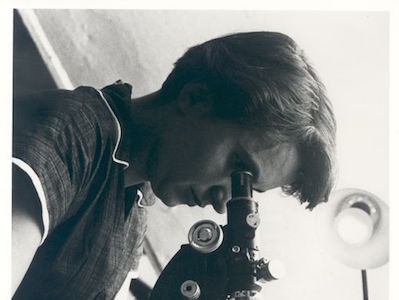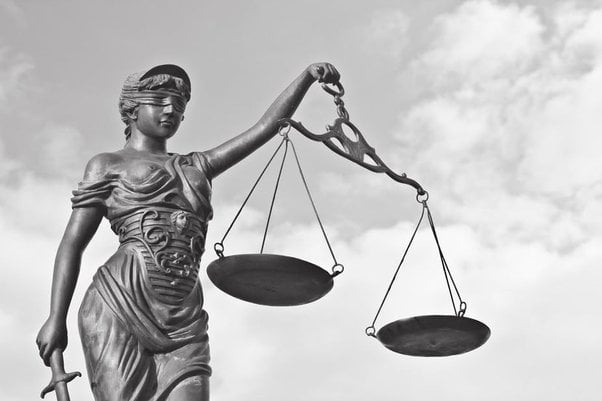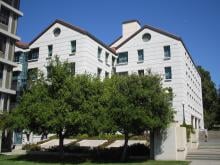The cliché of the pragmatic and lonely scientist gets old. Although scientists are highly analytical, their emotional range is not as limited as the media and stereotypes portray. In their work, scientists must be logical and methodical, but that doesn’t necessarily carry over to life and relationships.
"Science is not only a disciple of reason but, also, one of romance and passion." — Stephen Hawking
Society seems fixated in putting scientists (and most people, honestly) in boxes such as a mad scientist or the cold and unlikeable researcher. A while ago, I read an article on sciencemag.org discussing the toll of marriage on science careers. The article presented mostly anecdotal evidence to support the notion that scientists are either unable to marry, unable to maintain a marriage, or unable to remain prolific in their work after marriage.
It’s 2019 though, and we all need a reminder that scientists are not the aloof and critical characters we see on screen. In fact, there are famous and historic scientist couples who pushed each other in both career and love.
1. A Change of Heart: Pierre and Marie (Sklowdoska) Curie (Physics)
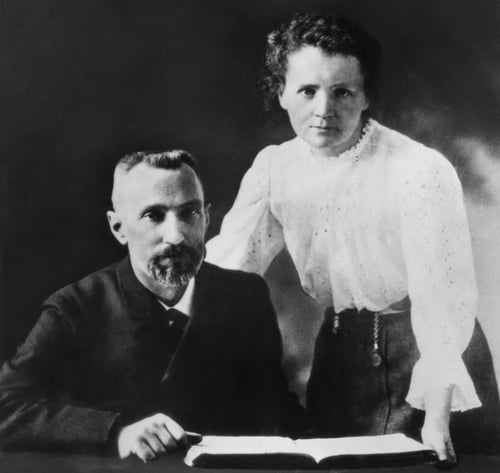
Pierre Curie once believed that women were nothing but a distraction to scientific work. But then he met Marie Sklowdoska, and he came to learn the very opposite. In 1894, Marie was starting work in Paris, investigating the magnetic properties of various steels. As she was on the hunt for a larger laboratory space, a friend pointed her in Pierre Curie’s direction, who was an instructor at the School of Physics and Chemistry. Although Pierre ultimately did not have much lab space for Marie (he barely had any himself), he did offer to help her use a highly sensitive piezoelectric device that he’d invented.
Through their mutual passion for science, the two became closer and Pierre proposed in 1985. At first, he was rejected because Marie wanted to return home to Poland. That summer, she visited her family in Warsaw and looked for work. During that period, Pierre wrote to her, urging her to come back to work on new magnetism research. Eventually, Marie was denied a position at the Krakow University (because she was a woman), and so she returned to Paris and the two were married.
After their marriage, the couple worked together, but separately, in their poorly ventilated shed. While Pierre investigated the electrical properties of crystals, Marie started her doctoral work on radioactive elements. After several years, Pierre became far more interested in Marie’s work and they started to collaborate and work as a team. In 1903, the couple won the Nobel Prize in Physics for their discovery of polonium and radium.
2. A Rom-Com Story: Jerome and Isabella (Lugoski) Karle (Physical Chemistry)
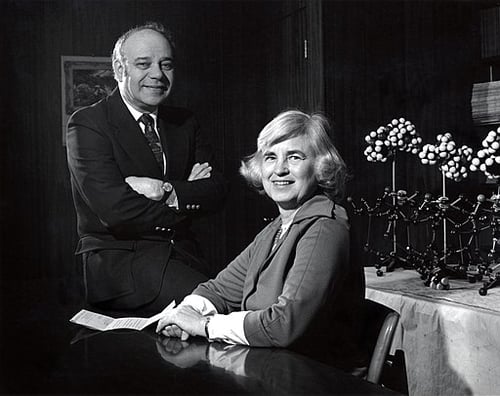
Jerome and Isabella Karle’s love story has the makings of a romantic comedy. Picture the classic tale of two students being forced to partner for a project and falling for each other. That is like the Karle’s story.
In 1940, Jerome and Isabella met on their first day of physical chemistry at the University of Michigan. Jerome was in the first year of his PhD, while Isabella was finishing her last year as an undergraduate. Due to an assigned seating arrangement, the two were partners for the class. However, the two did not make a good first impression.
“I walked into the physical chemistry laboratory and there’s a young man in the desk next to mine with his apparatus all set up running his experiment. I don’t think I was very polite about it. I asked him how did he get in here early and have everything all set up. He didn’t like that. So we didn’t talk to each other for a while.”
Jerome and Isabella even competed for the top grade in the class, but at the same time, they bonded over their love for chemistry as well. In 1942, the two got married. By 1946, they both finished their doctoral work and moved to Washington D.C. to join the US Naval Research Laboratory.
The Karles specialized in different, but complementary aspects of X-ray crystallography. While Jerome developed equations to determine how atoms were arranged inside complex molecules, Isabella worked on practical experiments to test Jerome’s equations. Together, they created the direct method for determining molecular structures.
3. Love at First Sight: Gerty Theresa Radnitz and Carl Ferinand Cori (Biochemistry)
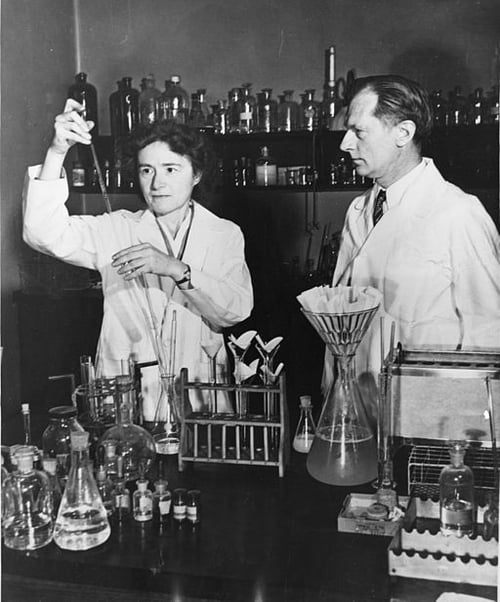
Gerty Theresa Radnitz was born in a time that didn’t welcome female scientists, but nevertheless, she was admitted to the medical school of Charles University in Prague in 1914, a rare and great achievement. Carl Cori was also studying there at the time and the two met. Right off the bat, Carl was attracted to Gerty’s charm and sense of humor. In addition to research, the two shared a love for the outdoors and mountain climbing. After graduating together in 1920, the Coris’ were married and Gerty even converted from Judaism to Catholicism to do so.
In 1922, World War I and increasing anti-Semitism forced the Coris’ to leave Europe and immigrate to Buffalo, New York where they worked at the Roswell Park Cancer Institute. Against others’ dissuasion, the Coris’ continued worked closely together at Roswell, studying the metabolism of glucose in the human body. In 1929, they proposed the Cori cycle for which they won the Nobel Prize in Medicine in 1947.
4. The First Science Couple: Antoine and Marie-Anne Lavoisier (Chemistry)
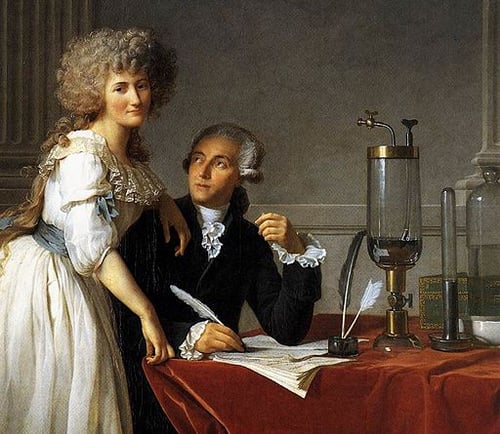 What would you do if you received a dowry in marriage? Buy a house? Or, if it’s the eighteenth century, land for a farm? Marie-Anne and Antoine did neither. After their marriage in 1771, the Lavoisiers used Marie-Anne’s dowry to construct a well-equipped laboratory for their studies. It was a time before Nobel Prizes, but the Lavoisiers secured their spot as the first great couple in science.
What would you do if you received a dowry in marriage? Buy a house? Or, if it’s the eighteenth century, land for a farm? Marie-Anne and Antoine did neither. After their marriage in 1771, the Lavoisiers used Marie-Anne’s dowry to construct a well-equipped laboratory for their studies. It was a time before Nobel Prizes, but the Lavoisiers secured their spot as the first great couple in science.
In their newly constructed lab, the Lavoisiers discovered the role of oxygen in combustion and in respiration in plants and animals. Their experiments also proved the law of conservation of mass, leading them to discover the chemical composition of water. Although Antoine Lavoisier is often credited the tile of the “father” of modern chemistry, much of his work would not have been realized without Marie-Anne. Because of her linguistic talent, Marie-Anne was able to translate many scientific texts in English, Latin, and French, which was invaluable for their research. Of course, translation required a solid understanding of the material and Marie-Anne was responsible for recognizing many of the chemical errors in previous works. Her ability to draw and accurately depict devices and formulas which they developed also allowed them to properly document their work.
Although these stories don't offer empirical evidence, I hope they still convince you that scientists are capable of being passionate, not only in research, but in love as well. And if you’re a scientist and you can’t relate yet, just remember Albert Einstein’s other theory of relativity, and know that it will come in time.
“When you are courting a nice girl an hour seems like a second. When you sit on a red-hot cinder a second seems like an hour. That's relativity." – Albert Einstein
A Contemporary Love Story
Kin talks to his friends Linda and Vince, a married couple collaborating extensively at the Mayo Clinic and in their own lives with a growing family and plenty of fun times outside the lab! Check out their story in BioChat below, and check out our other episodes too!

.jpg)
